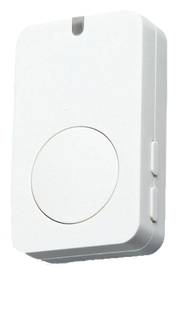Top Trends in Building Management Systems (BMS) in 2025
- Perceptive Things Team
- Mar 24
- 4 min read
Updated: Jul 26

Building management is evolving rapidly, with companies increasingly leveraging smart technologies to optimize energy use, enhance security, and streamline facility operations. With sustainability, remote management, and data-driven decision-making at the forefront, Building Management Systems (BMS) are more sophisticated and impactful than ever before.
In this article, we will explore the top trends shaping BMS in 2025. Plus, find out how organizations are leveraging these advancements to create smarter and more efficient buildings. But first, let's go over what a BMS is.
What Is a Building Management System?
A Building Management System (BMS), also referred to as Building Automation System (BAS) is an interconnected network of computers, sensors, and software that automates and monitors various building systems. These systems control various aspects of buildings, such as HVAC, lighting, electrical consumption, scheduling, and security.
From large business firms to smaller corporate offices, a BMS is an indispensable part of modern infrastructure. Its implementation continues to transform the way facilities operate, integrating cutting-edge technology to improve efficiency, reduce costs, and enhance sustainability.
The Major Trends Shaping the Evolution of BMS in 2025
Trend 1: Sustainability Initiatives
With industries worldwide focusing on sustainability, BMS plays a major role in helping businesses meet green strategies. Key areas include:
Water Leak Detection
Water management is vital for large corporate and commercial buildings with extensive plumbing or HVAC systems. For instance, where there is water, leaks are inevitable. But preventing water damage in your large residential and commercial buildings does not have to be a headache! The key is to be proactive in performing preventive maintenance and adopting advanced water leak detection technology, which has become a fundamental part of modern BMS
These sensors can be deployed in spaces like fitness centers (e.g., YMCA, gyms in hotels or corporate facilities), dormitories, and residential buildings.
Minimizing Energy Use
Energy management is another area in which BMS excels. Modern systems like smart energy monitoring platforms can significantly reduce electricity waste. Companies like Novant have employed BMS tools to optimize building energy use, resulting in increased efficiency and cost savings.
By deploying motion detectors and scheduling features from Perceptive Things®, businesses can optimize workspace usage, and configure HVAC systems, lights, and other utilities to operate only when needed.
Trends 2: Remote Management and Real-Time Data
Gone are the days when managing building systems required on-site visits. Today’s facility managers can monitor and control building systems from virtually anywhere. This is possible thanks to cloud-based solutions and smartphone integration. The capability enhances flexibility and ensures seamless building management across locations.
Cloud-Based Solutions to Enable Remote-Centralized Management
Cloud-based management platforms empower teams to operate buildings from anywhere in the world. This is particularly valuable for managers overseeing multiple sites.
Similarly, Perceptive Things® empowers remote management with a range of smart sensors, including:
Water leak sensors (Droplet Solo™): Detects and alerts facility managers to water leaks in real-time. You can check our blog on why facility managers need water leak sensors.
Ambient temperature and humidity sensors (Mercury™): Monitors ambient temperature and humidity to ensure optimal comfort and efficiency.
Asset motion trackers (Motiv™): Tracks asset movement and usage patterns to improve asset security, efficiency, and resource allocation.
Real-Time Alerts and Predictive Maintenance for Proactive Building Management
Real-time notifications have become critical for predictive maintenance and proactive building management. With features like remote diagnostics and troubleshooting, modern BMS solutions ensure that issues like leaks or HVAC malfunctions are addressed as soon as they arise.
At Perceptive Things®, we've taken this a step further. Our water leak Sensors integrate with our BMS platforms to send instant alerts, enabling managers to diagnose and resolve problems remotely, reducing the need for on-site visits. These automated processes accelerate response times and prevent small issues from escalating.
Trend 3: Data-Driven Decision-Making
Incorporating AI and data analytics into BMS enables businesses to make smarter, quicker decisions in building management. The ability to collect, analyze, and act on massive amounts of data offers facility managers an unprecedented level of control.
Harnessing Predictive Insights for Operational Efficiency
Predictive and preventive maintenance data collected by BMS sensors can identify patterns and trends that allow facility managers to predict potential risks and breakdowns before they arise. For example, analyzing historical water leak data can help prepare for seasonal water damage risks, while monitoring HVAC performance can prevent system failures.
By integrating Perceptive Things'® predictive products with various BMS platforms, businesses can centralize data analysis. This allows for informed and proactive decision-making, reduced restoration costs, and operational efficiency.
Optimizing Resource Allocation through Real-Time Data Analysis
Facilities management is smarter when driven by real-time insights. By analyzing occupancy trends, energy consumption, or maintenance needs, facility managers and building owners can fine-tune systems and allocate resources effectively.
For example, an AI-driven BMS by PerceptiveThings can adjust HVAC settings during peak occupancy or prioritize repairs in high-risk zones. This minimizes efficiency and prolongs equipment lifespan.
Trend 4: Safety and Security Enhancements
A modern BMS doesn't just focus on operational efficiency; it also prioritizes the safety and security of facilities. For instance, the integration of real-time surveillance, access control, and environmental monitoring ensures that facilities are protected from both internal and external threats. This reduces vulnerabilities while streamlining emergency responses.
Advanced Access Control Systems
Smart building technology now features sophisticated access control systems integrated into BMS to ensure that only authorized individuals can enter restricted areas. For example, Advanced access control systems by Perceptive Things® integrate biometric scanning or RFID-enabled credentials, with logs available for comprehensive real-time monitoring. This ensures facility security is robust and efficient.
Emergency Response Integration
Cutting-edge BMS platforms automate critical emergency responses, such as triggering fire alarms, contacting authorities, or shutting down dangerous systems during a crisis. Perceptive Things®’ solutions incorporate these automated features to protect both the building and its occupants.
Conclusion
The rapid advancement of Building Management Systems is reshaping how organizations operate and maintain their facilities. From energy savings to safety enhancements, these innovations are giving businesses new tools for achieving operational excellence and sustainability in 2025.
Have you encountered challenges in managing building systems in your commercial property? What innovative methods or technologies have you used for optimizing building management systems in your spaces? We're eager to hear your insights on the latest trends and best practices in building automation, energy efficiency, and smart building technologies!






